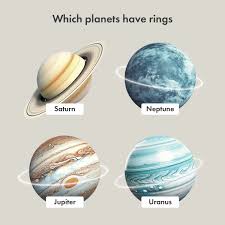Stamp: Aircraft and Rocket (Yemen, Arab Republic 1982)
Aircraft and Rocket (Yemen, Arab Republic 1982)
10 May (Yemen, Arab Republic ) within release Progress in Air Transport goes into circulation Stamp Aircraft and Rocket face value 60 Yemeni fils
| Stamp Aircraft and Rocket in catalogues | |
|---|---|
| Michel: | Mi: YE-AR 1699 |
| Yvert et Tellier: | Yt: YE-AR PA208B |
| Stanley Gibbons: | Sg: YE-AR 683 |
Stamp is horizontal format.
Also in the issue Progress in Air Transport:
- Stamp - Aircraft with Globe and Satellite face value 125;
- Stamp - Aircraft and Rocket face value 60;
- Stamp - Aircraft and Satellite face value 75;
- Stamp - Aircraft and Satellite face value 100;
- Stamp - First Plane and Satellite face value 50;
- Stamp - Flying Man and Satellite face value 25;
- Mini Sheet - Aircraft and Rocket face value 60;
- Mini Sheet - Aircraft and Satellite face value 75;
- Mini Sheet - Aircraft and Satellite face value 100;
- Mini Sheet - Aircraft with Globe and Satellite face value 125;
- Souvenir Sheet - Aircrafts and Satellites face value 4*100;
- Souvenir Sheet - Aircrafts and Satellites face value 4*125;
- Mini Sheet - First Plane and Satellite face value 50;
- Mini Sheet - Flying Man and Satellite face value 25;
- Stamp - Means of air transport face value 100;
- Stamp - Means of air transport face value 100;
- Stamp - Means of air transport face value 100;
- Stamp - Means of air transport face value 100;
- Stamp - Means of air transport face value 125;
- Stamp - Means of air transport face value 125;
- Stamp - Means of air transport face value 125;
- Stamp - Means of air transport face value 125;
Stamp Aircraft and Rocket it reflects the thematic directions:
An aircraft (pl. aircraft) is a vehicle that is able to fly by gaining support from the air. It counters the force of gravity by using either static lift or the dynamic lift of an airfoil, or, in a few cases, direct downward thrust from its engines. Common examples of aircraft include airplanes, rotorcraft (including helicopters), airships (including blimps), gliders, paramotors, and hot air balloons.Part 1 (Definitions and Abbreviations) of Subchapter A of Chapter I of Title 14 of the U. S. Code of Federal Regulations states that aircraft "means a device that is used or intended to be used for flight in the air."
Aviation is the practical aspect or art of aeronautics, being the design, development, production, operation and use of aircraft, especially heavier than air aircraft. The word aviation was coined by French writer and former naval officer Gabriel La Landelle in 1863, from the verb avier (synonymous flying), itself derived from the Latin word avis ("bird") and the suffix -ation.
A planet is a large, rounded astronomical body that is generally required to be in orbit around a star, stellar remnant, or brown dwarf, and is not one itself. The Solar System has eight planets by the most restrictive definition of the term: the terrestrial planets Mercury, Venus, Earth, and Mars, and the giant planets Jupiter, Saturn, Uranus, and Neptune. The best available theory of planet formation is the nebular hypothesis, which posits that an interstellar cloud collapses out of a nebula to create a young protostar orbited by a protoplanetary disk. Planets grow in this disk by the gradual accumulation of material driven by gravity, a process called accretion.
A satellite or artificial satellite is an object, typically a spacecraft, placed into orbit around a celestial body. They have a variety of uses, including communication relay, weather forecasting, navigation (GPS), broadcasting, scientific research, and Earth observation. Additional military uses are reconnaissance, early warning, signals intelligence and, potentially, weapon delivery. Other satellites include the final rocket stages that place satellites in orbit and formerly useful satellites that later become defunct.




